Korean War (33)
1 September 1952, a large percentage of Task Force (TF-77) was directed at supplies and positions at the front line area. One site was the synthetic oil producing center at Aoji, only 4 miles from the Manchurian border and 8 miles from Russia. The US Navy air attacks on Musan and Hoeam-dong in North Korea marked one of the few times that Panther jets were used exclusively as an attack plane.
13 September, two carrier strikes from TF-77 attacked the supply and troop billeting areas in the Manchurian border town of Hoeryong. The aircraft from the USS Bon Homme Richard caught a 130′ enemy naval vessel near Wonsan and sank it with rockets and 20mm strafing.
In September, the 5th Air Force sent its aircraft against enemy troop concentrations and barracks in the north-west Korean area. The Bomber Command went to similar targets near Hamhung in the north -east. Along the front lines, the FEAF (Far East Air Force) joined the US Navy and Marines to provide between 2,005 and 4,000 close air sorties each month of the summer and fall. They not only flew nighttime missions but also gave radar-directed close air support (10,000 or more meters from friendly positions) at night to front-line troops under CCF attack. During the day, the Mustang (F-51) pilots flew pre-planned and close air support missions.
The 315th Air Division also supported ground forces, flying n supplies and personnel to Korea while returning the wounded, reassigned and furloughed to Japan. C-124s carted men and cargo; C-47s provided tactical airlift to airfields near the front lines and C-119s hauled the bulky cargo, airborne and airdrop missions.
The 4th and 51st Fighter-Interceptor Wings replaced many of their F-86Es with the modified F-86-F. The new Sabre planes were more powerful and had leading wing edges to allow them to match the performance of the Chinese and North Korean MiG-15 jets. During the summer the enemy tended to stay in MiG Alley, but in September, they showed more initiative and willingly engaged the Sabres almost on a daily basis. By the end of October, the US pilots would destroy enemy MiGs at a ratio of 8 : 1.
28 September, while heading toward Outpost (OP) Zebra [Hill 205] occupied by the Chinese Communist Force, I and R platoons of the 187th RCT took positions at the base of Hill 250. From there they could see Hill 404 also entrenched with the enemy. A dummy plane flew over and crashed with a stuffed “pilot” on board to act as a ruse to flush out the CCF. The Rakkasan troops hid and anxiously waited to see if the plan would work. Apparently the enemy’s curiosity got the better of them and when they approached within 100 yards, the troopers opened fire and the battle was over within minutes.
The next few weeks, the 187th stayed along Line Missouri going out on patrols and constructing bunkers and outposts. They then returned to the airfield north of Seoul and were once again considered paratroopers.
2 October, the Tribal Class destroyer HMCS Iroquois, G89/217, commanded by William Landymore, was hit by some shore batteries. This shell caused the only 3 Royal Canadian Naval casualties of the war; 10 others were wounded.
Click images to enlarge.
###############################################################################
Farewell Salute –
Thomas Belcik – Chicago, IL; US Air Force, WWII, 306 Bombardment Group
Richard Burns – New Zealand; Royal NZ Air Force, WWII #415989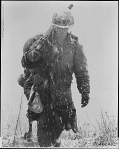
Alfred Carmony – Seattle, WA, US Army WWII & US Navy Korea
Billy Jones – Guthrie, OK; US Navy, WWII, PTO
Joseph King – South Boston,MA; US Army, WWII
Edward Kosner – Northbrook, IL; US Army Air Corps, WWII
Howard Mauldin – Oklahoma City, OK; US Army WWII
Thomas Verran – Matua, New Zealand; 8th Army, WWII #398123
###########################################################################
Any advertising seen on this sight is not from GP Cox or Pacificparatrooper.
###########################################################################
Posted on December 27, 2013, in Korean War and tagged family history, History, Korean War, Military, Military History, nostalgia, Pacific War, paratroopers, veterans. Bookmark the permalink. 63 Comments.
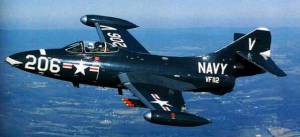
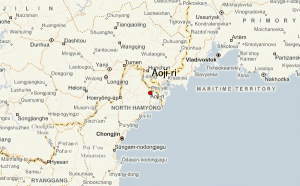
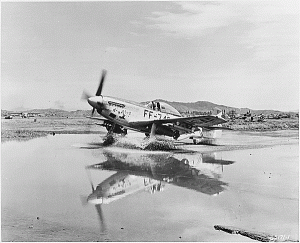
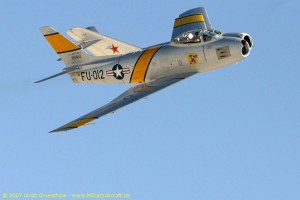








I really enjoyed your blogging, and style format….interesting to have a glimpse or dose of what it was like back then. For me and for other’s we have heard and learned so much. People feel so many different ways about such travesties, no matter what way you think or look back about it, back then or even recently. It is great and I find it admirable that you are able to speak and express how it was laid out; though unfortunatly so. Very hard for a lot to do. The facts are very interesting, and such courage in all the soldiers, here, there, from long ago…near far…we are truly Thankful…yes we are. Nice to learn from someone that speaks about it, and I know how hard it may or could be? It is truly inspiring…from someone like me…who has never had to fight, in that sense…because of all that mess…my grandfather’s included…and grandfather’s and father’s and mother’s who fight, or did and do what they had to do…well…it is just that-admiral…love your blogs…!! Interseting to me.
LikeLike
I’m very glad you found it interesting. Since so little is taught in school on the subject, my intention is to inform and the troops’ memories alive.
LikeLike
yes, exactly what I wanted to learn about. I found the text books difficult to read from. I am interested in the subject matter, the difficulties the Men and Women enjured, but more on a humanities level….in my school, we learned a lot about the government…your blog really catches glimpses, no matter how tragic it was and is, still and can be…very interesting, I will read more for sure..Thank you, we need that type of resourse…for sure!!!!!
LikeLike
I’m really impressed with the F-86-F. That’s some fighting machine in the hands of American pilots !!
LikeLike
And they knew how to use it! Thanks for dropping by, Judy!
LikeLike
What a jet the F-86 was!
LikeLike
Yes it was! Have a great New Years!!
LikeLike
Happy New Year to you too!
LikeLike
Pleased to see your disclaimer re the advertising. I haven’t seen any on your post but I noticed some on mine. I may borrow your idea.
LikeLike
I couldn’t tell because I see a square for a possible video ad on my end – thanks for the good news.
LikeLike
Fascinated by the Korean War, and you continue to help keep the fascination fueled. Keep up the great posts!
LikeLike
Thank you very much, Canada. I am thrilled to learn someone is gaining knowledge from me instead of the usual click the like button and run. Have a great New Year!!
LikeLike
We just cannot thank you enough for bringing the real story of this war out, in the detail we have seen here. No history book in school came close to mentioning the Korean War, except for a blip consisting of a mere one or two sentences.
There are folks who believe it’s time for us to put away Pearl Harbor and other key days of American victories, wars, bloodshed. They think it doesn’t serve anyone to ‘remember those things’ every anniversary…we are baffled by that approach in their perspective of this country’s great history and the blood and tears that were spilled, the sacrifices and deaths wrought in the name of all that makes her great and free. Not give honor or recognition to those that gave/give so much selflessly, in order to have what we have today? Not remember the terrific sacrifices and integrity of the great people who defended the greatest nation in the world through it’s darkest days? Not memorialize the conflicts or examine causes and solutions to the very issues which forced us to take up arms to defend what we believed was just, right, and honorable?
How then can the generations which follow understand what patriotism and love of country is
then…? How then does one become proud and loyal to the homeland and what it affords them? How do we proceed in peace and learn from our mistakes if we don’t re-visit with a solemn tribute and vow to uphold liberty and justice?
Thanks so very much to you and all of the other ‘historians’ here who add so much depth to the portrait of history, that is otherwise a threadbare patchwork poorly represented in the textbooks.
Happy New Year and God Bless You, Gp.
Morguie and CJ
LikeLike
CJ and Morguie, I sat in amazement as I just read this comment of yours – I doubt that I deserve quite so much praise – it was with the feelings you expressed that pushed me forward to try and chronicle that area of the planet, to enlighten those that do not hold such ideals dear and to impress upon a sometime lackadaisical society the importance of history, country, honor and all those other traits that held this country together for over 300 years. Our veterans are some of the best in the world and for me – they take the bows!
LikeLike
War never takes a holiday, does it?
LikeLike
Aptly put, Sheri. You have been a very busy bee this Christmas season and I doubt it will slow down for you. The work you are doing with our veterans and how you get others involved is remarkable and commendable. All my best to Tom and Miss Biss.
LikeLike
Carry on soldier! I cannot believe how many times I hear that phrase among the veterans when they are boosting each other to go on yet one more outing. Some are much more fit than others, as you might expect.
Off subject – My tech guy took away my hard drive last night – I’m praying for some salvation. Guess I’ll know sometime next week.
LikeLike
Best of luck, Sheri. With all you do, your computer HAS to be working well.
LikeLike
It has been delightful reliving history throughout the year here at your blog. Have a Happy New Year.
LikeLike
Thank you very much. The photos on your site have been a pleasure witness throughout the past and I’m certain will continue to be as beautiful during 2014.
LikeLike
Since the last few posts have been mostly about aerial bombardment – does that mean the war moved into a new phase? Was there less ground combat at this time or have you decided to concentrate on this aspect?
LikeLike
The Main Line of Resistance continued to have action but rarely changed its position – so it was considered a stalemate (regardless of the fact that men continued to die),but with this being the case, a lot less recording of the action was made. The UN was also trying to transfer combat responsibilities over to the South Koreans.
LikeLike
Maybe the “dummy” plane was one of those drones you talked about in a previous post. There’s something very appealing in the look of those planes you pictured! Hope you all had a very Merry Christmas. Wishing you all the best for the coming year!
LikeLike
You are probably quite right, Linda! We had a very nice Christmas, thank you and we’re looking forward to plans for an even better New Year!! I hope the same is true for you.
LikeLike
The air war in Korea is interesting because of the mix of jets and prop aircraft. Interestingly, the prop aircraft was still used in ground attack for the Vietnam war.
LikeLike
They all seemed to have their specialty. Depending on what the mission was (and where) determined what type of aircraft. Thanks for stopping in, Mike.
LikeLike
From my understanding, part of the success of the Sabres was also due to 2 factors – first, most of the pilots were “leftover” aces from WW2, and second, the Sabres used the 50-cal machine guns, which used a large number of bullets to cause damage, as opposed to the MiGs which carried larger (23 and 37mm) cannons which used size of shell to cause the damage. The MiGs would have done better with experienced (and better-shooting) pilots, much like the German WW2 planes that used larger cannon, and were very deadly with experienced shots but far less effective with novice pilots. (Yes, I’m a military aviation nut. 😀 )
Great article, and I loved the photos. Thanks!
LikeLike
Glad to hear from an another expert to add the data into the story. Thanks, John – always a pleasure.
LikeLike
Up to 4,000 each month during summer and fall. Wow, that’s a lot of aviation fuel and ordnance. And still, for the enemy battery to score a hit on a presumably moving warship was at incredible odds…
LikeLike
That’s true. But, the amount of misses that I avoid including are quite numerous – I suppose they had to hit something sometime.
LikeLike
Great use of the dummy plane…looks like curiosity did kill the cat!
LikeLike
Yup! Guess that’s what they were counting on, Mrs. P.
LikeLike
Great reporting, thank you on the history lessons.
LikeLike
My pleasure. Thanks for reading.
LikeLike
I was a bit confused at first with the Sabre photo, some very close flying there. Red star? There has to be a story behind that shot …
LikeLike
No story that I know of, do you think I should look for another photo so others won’t also get confused?
LikeLike
I think most folks will figure it out—it was the red star (and the double nose) that first caught my eye. The Sabre was a truly beautiful aircraft …
LikeLike
It was quite unique for its time, wasn’t it?
LikeLike
I spent a while trying to figure out if it was two planes or a sort of catamaran-style plane. As always, you grasp of details is astonishing.
LikeLike
Sometimes… thanks.
LikeLike
Just for fun, go Google images of “twin mustang”. Trying to make a fighter with long range and more power to fight the early jets, the folks who built the P-51 Mustang during World War Two glued two of them together, complete with two pilots. And for TRULY bizarre stuff, look up images for the Blohm Und Voss BV-141. I’ll let you discover that, without ruining the surprise. Call it a New Year’s gift! 😀
LikeLike
You were right, the twin Mustang is a hoot, but that BV-141!?! I kept enlarging the pictures to be certain I was seeing correctly. Thanks for the New Years surprise – hope we have an improved year on the next horizon.
LikeLike
I can’t tell you for certain, but that’s probably a captured “evaluation” plane that the USAF used to counter the MiG – possibly even leading to the slots mentioned by Job Conger. For a singular, similar example, look up “Akutan Zero” on Wiki – you’ll see a Japanese Zero in full USAAF (Army Air Force) trim. If you want, I could try to track down the fuselage number, and see if I could trace that particular plane’s story.
LikeLike
I believe it is mentioned in one of my posts that after awhile, the enemy started piecing together the parts of planes that were downed and flying them against us.
LikeLike
Such a simple trick with the dummy plane, yet so effective. Do forces use the same idea these days?
LikeLike
Someone else will have to answer that question I’m afraid. The technology of today’s military is far beyond my comprehension (getting’ old ya know).
LikeLike
You and me both!
LikeLike
Again, I can’t say for sure, but you can check out “Operation Aphrodite” (that should be the name) about the use of both B-17s and B-24s (the Navy version, technically a PB4-Y, I think) as giant flying bombs. They were flown to a certain point by 2 pilots, then the pilots jumped via parachute, and a following aircraft would carry a pilot who would remote-control the airplane, via primitive TV – similar to the Germans who used the “Fritz-X” guided bomb, one of the world’s first “smart bombs”.
LikeLike
I just read a refresher on the Saber for my recent post on the National Air Museum. In the process I read about Aces, and was surprised both of the relatively few number of Aces, and the widely conflicting stories of kill ratios, each sides making claims that seemed more propaganda than actual kills.
Records seem to indicate close to a draw when comparably-trained pilots met in combat. Some of the lopsided kill ratios might reflect US vs. North Korean or Soviet vs. South Korean encounters.
for example: http://www.airliners.net/aviation-forums/military/read.main/33435/
Great read, as always.
LikeLike
I have found a number of times when the records of the opposing sides disagree – I believe that’s why they call it propaganda. I do try to confirm such reports with more than one source so as to give the reader the most accurate info I can find. Thank you for the link and coming by today.
LikeLike
Ditto the muscleheaded. Slight correction: The F-86F, which replaced the F-86 had leading edge slats which extended from the wings during high-G, low-speed maneuvering. They allowed the Sabre pilots to turn tighter than the earlier Es and reduced MiG pilots’ ability to out turn pursuing Sabres at low speed. The Sabre and 15 were fairly evenly matched at higher speeds, though MiGs flew at altitudes the 86 pilots could not reach. Combat was engaged most frequently only when MiG pilots thought they had the advantage in numbers or when they were caught lower down.
LikeLike
Thank you very much for the additional data, Job.
LikeLike
Either the Canadians were really lucky, or they didn’t get involved in too much action!
One wonders how they got that ‘dummy’ plane ruse right. A sacrifice of a perfectly good aircraft, radio-controlled? Or some less expensive but airworthy mock-up?
LikeLike
The Canadians were well involved – land and sea. The UN forces were lucky that the shore batteries were more annoying than accurate. (I simply disregarded adding the naval entries of ships aimed at and missed) The dummy pilot ruse was done by the 187th RCT Rakkasans (a US Army paratrooper group that my father Smitty was with in WWII)
LikeLike
I am still curious as to what aircraft was used, and how the crash was simulated.
LikeLike
So was I, but I was unable to locate a picture or specifics – it must have been something they threw together.
LikeLike
Back when there was still an airbase at Lincoln, Nebraska, there were daily flyovers over our house of Grumman Panther jets. In the 1960s, they were used as trainers. The distinctive design of these is unmistakable.
LikeLike
I did not know that, what was the name of the airbase? Thanks for dropping in today.
LikeLike
It was the “Lincoln Airbase” it was a USAF base. After being decommissioned, it’s now the HQ of the Nebraska Air National Guard.
LikeLike
Thank you very much!
LikeLike
Another great read !!!!
LikeLike
Thanks, Muscles!
LikeLike
Pingback: Roger Mickelson’s History Today | Sandia Tea Party